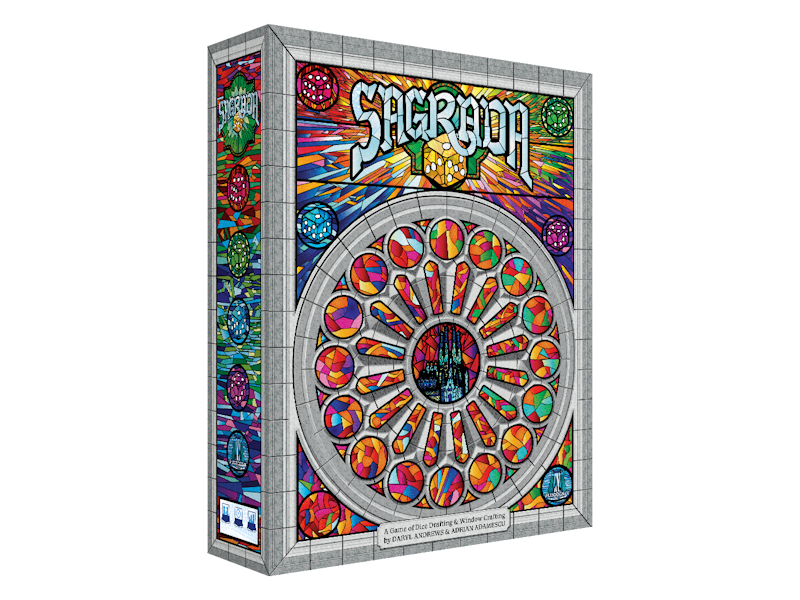Sagrada
review by Alapai
Sagrada is a dice-drafting game for 1-4 players from Floodgate Games. In it, you play as glass artisans constructing stained glass windows for the Sagrada Familia, trying to create the most beautiful window based off of objective cards granting vicotry points for different conditions.
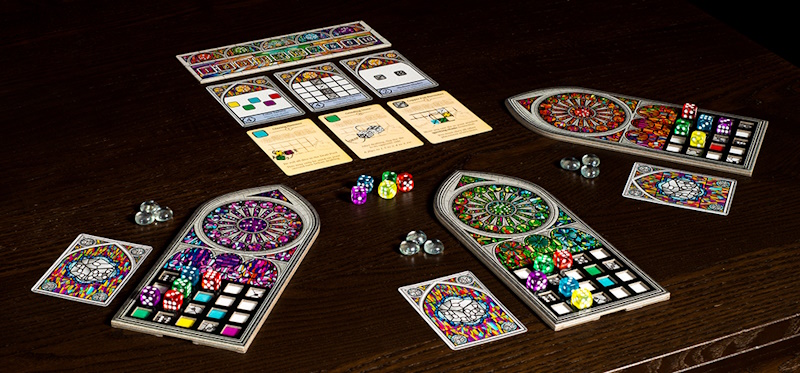
To start a game of Sagrada, each player is given a player board and two double-sided pattern cards that slot into the player boards. Each pattern card will feature two grids with some blank spots and some spots where only specific dice colors or numbers can go. The trickier the pattern, the more favor tokens are awarded to the player selecting that pattern. In the center of the table, you place three random tool cards and three random public objective cards. Each player also is given one private objective card. Sagrada is played over 10 rounds. Each round, the Start Player rolls a number of dice equal to two times the number of players, plus one (i.e. seven dice for three people). Starting with the Start Player, the players will then select one die, placing it onto their board. Once everybody has selected a die, then everybody selects a second die, starting with the last player to select and going backwards to the Start Player. The last die is then placed on the Round Track, indicating that the round is over and the next player clockwise becomes the Start Player. To place a die on your board, you have restrictions for where you can place it. During the first round, the first die you select has to go on the outside of your grid. Every subsequent die has to be next to a die you’ve already placed (including diagonally). In order for a die to go onto your grid, it has to go onto a blank space or a space that it shares a color or number with. Additionally, a die cannot be placed next to another die that it matches color or number with. Favor tokens can be spent on your turn to use the tool cards that allow you to more easily place your dice. After 10 rounds, you add up points from the public objectives as well as your private objective to see who the winner is.
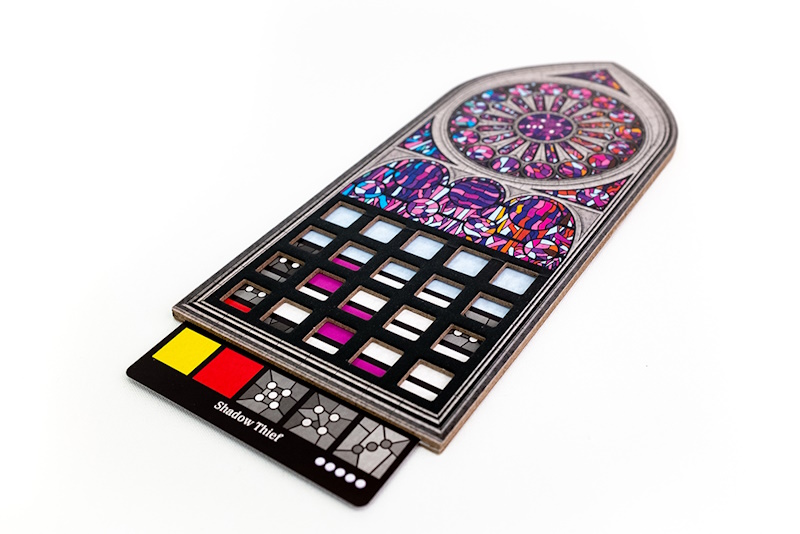
As I mentioned in my review of Mind Space, I’m a big fan of puzzle games and while Sagrada isn’t quite what I’d refer to as a puzzle game, playing it feels somewhat like solving a logic puzzle and that scratches a similar itch. Utilizing the dice as part of an open draft is a good way for the game to use dice, but not get bogged down by individuals doing better because they rolled better than their opponents. The snake drafting that changes Start Player each round makes it so that nobody is too disadvantaged while selecting their dice. Early picks in a round are good because your first pick is from lots of options, but bad because your second pick is from fewer choices. Late picks in a round are bad, because the best dice are potentially taken before you can choose, but good because you get to choose both of your dice close to each other and can build your strategy around that choice.
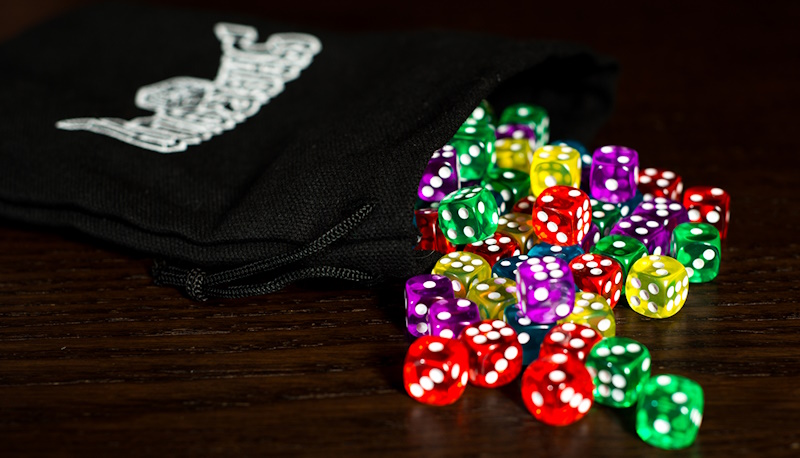
Beyond just the puzzle-like aspect and the well-balanced drafting, the game itself also looks very nice. Like with Azul (and especially Azul: Stained Glass of Sintra), you are putting together a colorful display. With Sagrada, you have a whole bunch of colorful translucent dice that you are arranging into a grid on a stained-glass window inspired player board. The end of the game has each player with their own unique arrangement of dice, combined to make fun patterns of colors.
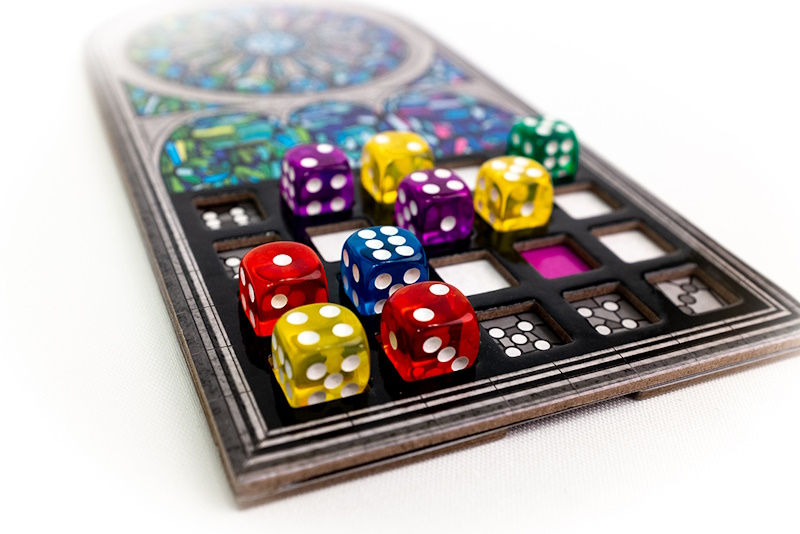
If you’re looking for a game that’s pretty easy to pick up, but that has some good depth of choice that can make for a fun experience regardless of skill level, especially if you want a game that’s also nice to look at, Sagrada is a great choice.
Sagrada is available now from our webstore.
